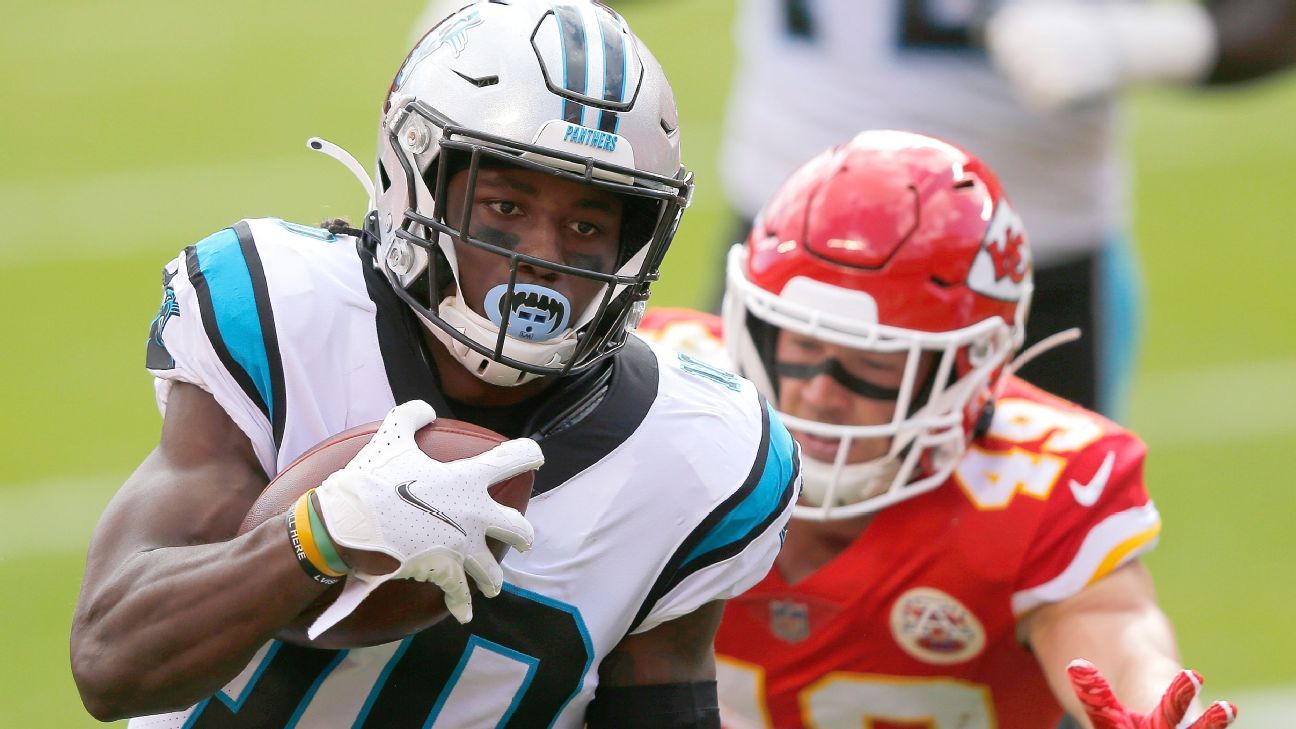
ASHBURN, Va. — The Washington Football Team needs to settle who will throw the ball for it this season. However, while quarterback remains the hottest topic, the group he will throw to is a big priority. To help any quarterback, Washington must improve at wide receiver.
And there’s one quality the team wants most: Speed.
They have Terry McLaurin, who has caught 145 passes for for 2,037 yards in his first two seasons without any consistency at quarterback or from other wide receivers. He has been targeted 223 times, and over the past two seasons no other Washington wide receiver has more than 95 targets or 61 catches. No other player has more than 111 targets.
Washington finished 24th in the NFL with 31 plays of 20 yards or more by wideouts, and McLaurin had 17 of them. In other words, they will add more talent around him.
Who are the best free-agent solutions?
More options exist this offseason. Signing one would allow them to target an offensive tackle in the first round with the No. 19 pick of the 2021 NFL draft.
Chicago Bears wide receiver Allen Robinson II would be considered the best available and would help any quarterback look better. That’s what he did for Blake Bortles in Jacksonville and Mitchell Trubisky in Chicago. He also had 22 gains of 20 yards or more, one behind the league lead.
However, if Washington wants pure speed, there is Curtis Samuel, whom the Carolina Panthers drafted when Ron Rivera was their coach and Marty Hurney the general manager. Both are now in Washington along with offensive coordinator Scott Turner, who was in Carolina as well. Samuel’s speed makes him dangerous. Against Washington this season, for example, he caught a 45-yard pass where a head fake didn’t fool the safety, but his speed made the play work. He creates well after the catch, too, and can help in the backfield.
Nelson Agholor averaged 18.67 yards per catch for the Las Vegas Raiders last season, second in the NFL. His average air yards per target ranked third at 11.1 yards. In other words: He’s a downfield threat. In Philadelphia, he was used mostly in the slot. From 2017 to 2019 with the Eagles, Agholor caught a combined 117 passes from the slot and 37 outside. With the Raiders, he caught 12 passes in the slot and 35 outside. One NFC scout called him explosive with big-play ability, but he has inconsistent hands. His flexibility would pair well with the equally versatile McLaurin.
Will Fuller (Houston Texans) is another fast (and probably expensive) free agent: He averaged an NFL-best 11.4 air yards per target and was fifth at 16.58 yards per catch.
Chris Godwin (Tampa Bay Buccaneers) and JuJu Smith-Schuster (Pittsburgh Steelers) are other prominent free agents; both are considered playmakers, though Schuster is not considered a burner.
How much does the QB situation impact free agency?
A lot. Not at all. Or, OK, maybe a little. It depends which agent you ask. As it searches for an upgrade, Washington, for now, has quarterbacks Alex Smith, Taylor Heinicke and Steven Montez under contract with Kyle Allen an exclusive rights free agent.
One agent was adamant he wouldn’t send his clients into a situation like Washington’s, feeling it could prevent them from building up statistics and earning another deal. That would especially be true if the player was coming on a one-year, prove-it deal where numbers equal more money the following year.
However, another agent, who also represents some wide receivers, said the quarterback situation wouldn’t matter.
“For any player in free agency, money is always the No. 1 thing,” the agent said. “If it’s equal in pay, you go to your next criteria. For your last deal you might say I’ll play with the best quarterback, but those guys have gotten their money already.”
Another agent said if a guy hasn’t played with a good quarterback, it might fuel his desire to get with one. But it was clear some quarterbacks would be undesirable.
“I don’t think there’s ever a cookie-cutter method,” he said. “It depends on the player and his priorities.”
Could the draft provide help?
ESPN draft analyst Mel Kiper Jr. said of Washington’s situation: “Wide receiver is the deepest position in the draft. … They’ve got to find someone.”

Kiper said as many as 40 wide receivers could receive draftable grades. Because of the unusual season, and lack of great scouting opportunities, teams will disagree on which 40 warrant those grades. A wide receiver a team likes in the fourth round could fall to the sixth or seventh.
That draft depth also could prompt Washington to spend elsewhere in free agency, or it could allow the team to trade back from the No. 19 pick and still get a player who can help. Florida’s Kadarius Toney likely will be available when Washington selects in the first round. He is not considered a deep burner, but he does have good speed and makes defenders miss because of elite quickness.
“He’s a playmaker,” Kiper said.
Kiper listed others in the top two rounds who could make an impact, including Elijah Moore (Ole Miss) and TuTu Atwell (Louisville). They are smaller but with excellent speed, particularly Atwell. There’s also Western Michigan’s D’Wayne Eskridge. He’s another small-but-fast target who can align in the slot, but also move outside.
“He’s super explosive,” said Jim Nagy, the Senior Bowl director as well as an ESPN college draft analyst. “He was playing at a whole different speed than everyone else, but was that just the [Mid-American Conference]? … But the speed was real.”
Nagy also pointed out UCLA’s Demetric Felton, a running back in college who stood out in the slot at the Senior Bowl. His versatility is attractive and he could be a younger version of Samuel.
It’s too early to know who will be available for Washington, but there will be options if it doesn’t land someone in free agency.
